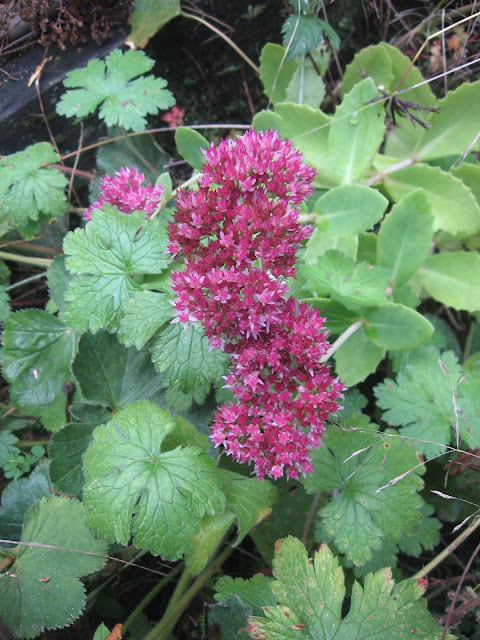The second line of defense is sprinkling cayenne pepper over the bean seeds and putting a 4" galvanized nail into the ground next to pole bean seeds. It can be difficult to recover all the nails the next year or in fall and has some danger- WARNING, use at your own risk.
The third line of defense with pole beans, and I even did some of the bush beans, was wrapping the stems with around 8-9" of aluminum foil, tearing off that length then cutting them into four 3" wide pieces. I stack the strips before cutting. It can be a little difficult pulling them apart but it seems easier to me than cutting each strip in 4 pieces by itself. I had a really good bean year, many of the pole beans were scarlet runner type beans that like the cool days and nights in the Pacific Northwest. They don't do very well in heat. They can get tough pods if left on the vine too long but I have been shelling beans for shellies and they are very good, similar to the lima beans of my southern upbringing, meaty and succulent. What some people call mealy or potato-like. I like them like that, just as I like okra plain, boiled, mucilaginous and able to slide right down your throat. I was raised on Southern cooking...
Anyway, lava rock is pretty cheap, close to $1.00 for a 5 gallon bucket, and fairly lightweight for a rock. I use 5 gallon buckets which are a little heavy but not unmanageable for me, and load them into my car or van. 10 buckets was enough for one season, and since they don't break down or go away, they will be there in the ground next year and eventually perhaps I will not have to add any more. Deer are supposedly repelled by having to walk on it on the ground surface as well.
Splendor in the Japanese Cutleaf Maple, a cascade on the untrimmed side-
Layers in the cut-away driveway and walkway side-
Side view with a flutter of blueberries-
Acer palmatum 'Purple Ghost' is finally looking like a tree, though still small, after 5 years-The newspapers are to try to control the weeds and ground covers there because I want to plant Alpine strawberries next year. The voles will doubtless go crazy under all that cover, but don't seem to bother the strawberries.
So, here's wishing you success in your battle with the critters, Hannah










































